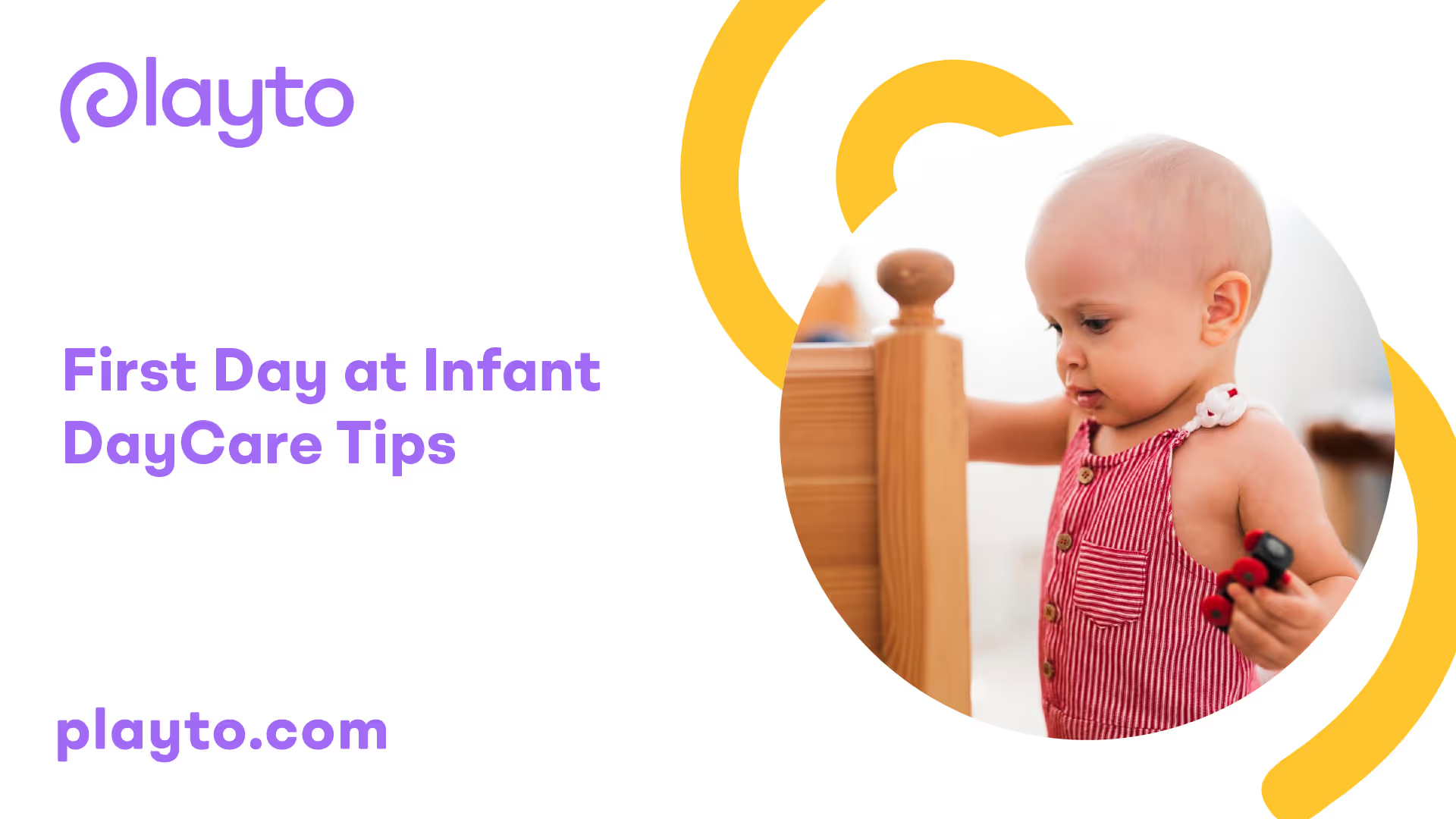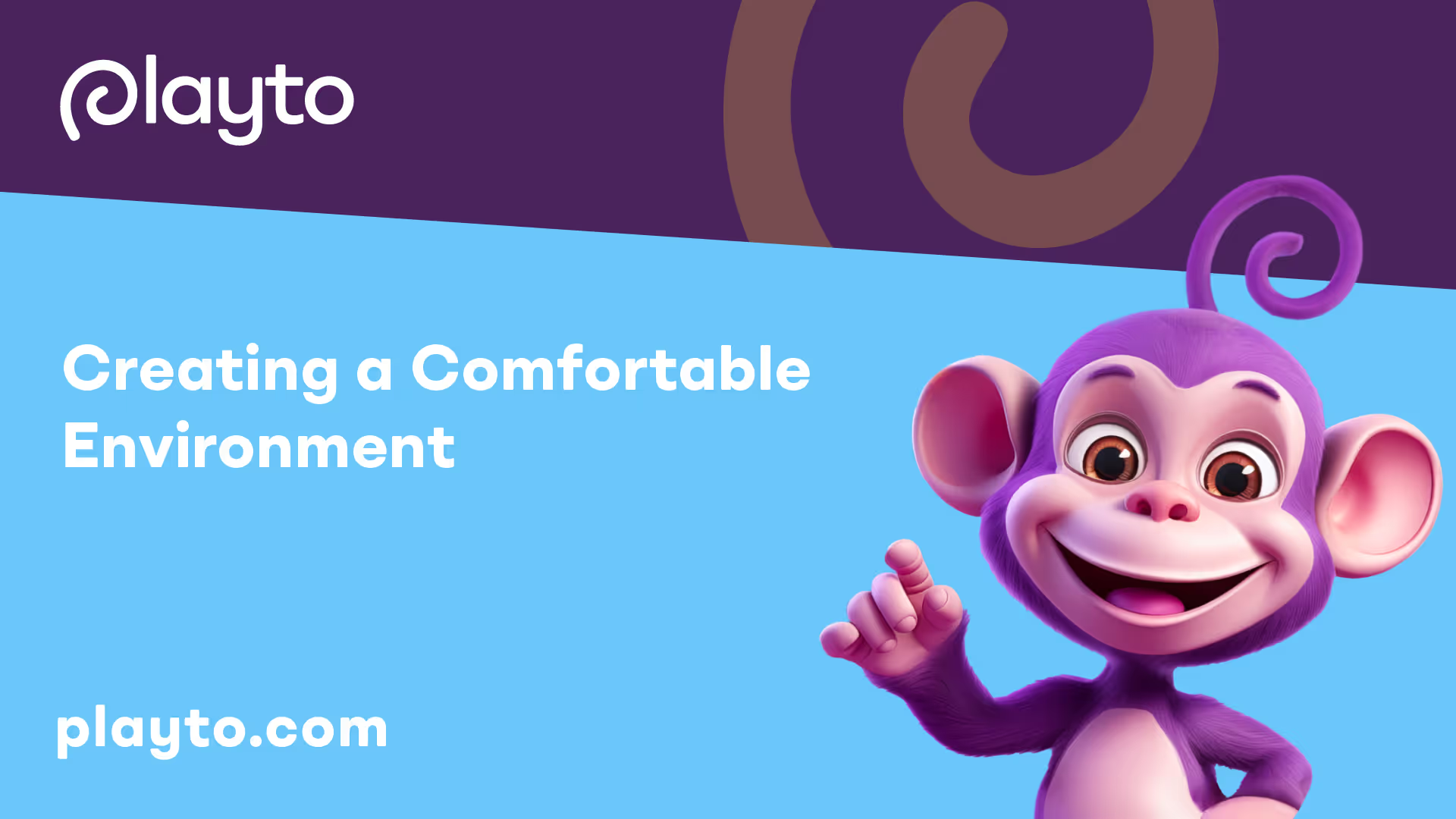
Preparing for the First Day
Preparing for an infant's first day at daycare involves ensuring all necessary items are ready and required forms are completed. This preparation helps smooth the transition for both the child and parents.
Essential Items to Bring
When packing for the first day at daycare, it is important to bring the necessary items to ensure comfort and care. Parents should confirm what items the daycare provides, as this can vary by location. Here is a checklist of essential items:
Item Purpose
- Diapers: For hygiene and comfort throughout the day.
- Wipes: For clean-up during diaper changes and meals.
- Change of Clothes: In case of spills or accidents.
- Bibs: To keep clothing clean during feeding.
- Blanket or Comfort Item: For nap time and emotional security.
- Bottles or Sippy Cups: For feeding, labeled with the child's name.
- Food or Snacks: If not provided by the daycare, ensure they are age-appropriate.
It is recommended that parents label everything their infant brings to daycare using non-toxic markers for items in contact with the baby and labeling methods like masking tape for bottles and iron-on labels for clothes and bibs [1].
Required Forms to Complete
Completing necessary forms is crucial for a successful first day at daycare. These forms ensure compliance and proper care for the infant. Essential forms include:
Form Name Purpose
- Feeding Form: Provides information on the infant's feeding schedule and preferences.
- USDA Application: Ensures the child qualifies for nutritional support programs.
- Shot Record: Confirms the infant's immunizations are up to date.
- Medication Form: Required if the infant needs medication during daycare hours.
Parents should ensure all forms are filled out accurately and submitted on the first day to avoid delays in care. Preparing these items and forms will help parents feel confident as they navigate the transition to daycare. For more information on selecting the right daycare, check out our article on choosing the right infant daycare.

Creating a Comfortable Environment
Establishing a comfortable atmosphere for infants on their first day at daycare is crucial for easing their transition. This can be achieved through visiting the daycare together and creating a consistent goodbye routine.
Visiting the Daycare Together
Before the first day, parents should consider visiting and touring the daycare with their child. This step can significantly help both the child and parent adjust to the new routine [2]. Familiarizing the child with the environment helps to reduce anxiety and build excitement. During the visit, parents can point out the fun activities their child will experience and introduce them to caregivers.
Benefits of Visiting the Daycare
- Reduces Anxiety: Eases concerns for both parent and child.
- Familiarizes the Child: Helps the child get acquainted with the new environment.
- Introduces Caregivers and Friends: Allows the child to meet caregivers and peers.
- Parent Questions: Provides an opportunity for parents to ask questions and learn about daily routines.
Establishing a Goodbye Routine
Creating a consistent goodbye routine can make parting easier for both the parent and the child. This routine helps to set expectations and provides comfort. Parents should ensure they follow through on promises to return at a specific time. Discussing the goodbye routine with the child in advance can help them understand what to expect.
A typical goodbye routine may include:
- A short hug and kiss
- A wave goodbye at the door
- A special phrase or signal that indicates it’s time to say goodbye
By establishing this routine, children may feel more secure and less anxious about separating from their parents. For more insights on choosing the right daycare, check out our article on choosing the right infant daycare.

Easing the Transition
Transitioning to daycare can be challenging for both infants and parents. Utilizing effective techniques can help ease this process. This section discusses gradual separation methods and ways to encourage independence in infants.
Gradual Separation Techniques
Implementing gradual separation practices can significantly assist infants in adjusting to their new daycare environment. This approach allows children to become accustomed to being away from their parents while fostering a sense of security. Strategies for gradual separation include:
- Short Visits: Schedule visits to the daycare before the first day. This helps infants familiarize themselves with the caregivers and environment. Quora suggests that these short visits can reduce anxiety on the actual first day.
- Practice Separation: Arrange for trusted adults to watch the child for brief periods. This can help infants understand that their parents will always return. Gradual exposure to separation can help ease any feelings of distress [3].
- Transitional Objects: Provide a comforting item from home, like a small blanket or stuffed toy. This can serve as a reminder of home and help infants feel more secure in the new setting.
The table below summarizes the recommended gradual separation techniques:
Technique Description
- Short Visits: Gradually introduce infants to the daycare setting.
- Practice Separation: Use trusted adults for brief periods of care.
- Transitional Objects: Provide comfort items from home to ease the transition.
Encouraging Independence
Fostering independence in infants can also ease their transition into daycare. Encouraging self-sufficiency allows infants to gain confidence in their abilities. Here are some practical ways to promote independence:
- Self-Feeding: Teach infants to eat independently. Providing opportunities to explore food can enhance their comfort during meal times at daycare.
- Playtime: Allow infants to engage in solo play, which helps them become accustomed to playing without immediate parental involvement. This encourages them to interact with other children and caregivers at daycare.
- Hygiene Skills: Introduce basic hygiene practices, such as washing hands. Encouraging infants to participate in these activities can make them more comfortable in the daycare environment.
Supporting independence not only prepares infants for daycare but also contributes to their overall growth and development. By employing gradual separation techniques and fostering independence, parents can help ease the transition and ensure a positive experience for their child. For more insights into daycare, consider reading about the benefits of daycare for infants or find out how to choose the right infant daycare.
Managing Emotions
Transitioning to daycare can bring about a mix of emotions for both infants and their parents. Understanding these feelings is vital for a smoother experience.
Understanding Separation Anxiety
Separation anxiety is a common reaction for children starting daycare. This emotional response typically peaks between the ages of 9 and 18 months, making it a significant concern for many parents. Infants may express frustration or distress when separated from their caregivers, which is a normal part of their emotional development.
Parents themselves may also experience grief and anxiety during this transition, especially if they have past experiences related to separation. It is essential for parents to recognize their emotions and understand that their feelings can influence their child's adjustment to daycare.
To help manage separation anxiety, parents can:
- Establish a consistent goodbye routine.
- Provide comfort objects, such as a favorite toy or blanket.
- Stay calm during drop-off to reassure the child that everything is okay.
Supporting Emotional Development
Creating an emotionally supportive environment in daycare is crucial for infants. Children need to feel loved and safe to foster their neurological, cognitive, and emotional development. Daycare providers should be trained to recognize and respond to children's emotional needs, ensuring that they feel secure and understood.
For parents, supporting their child's emotional development can include:
- Engaging in conversations about feelings to validate their child's emotions.
- Encouraging playtime with other children to build social skills.
- Being attentive to behavioral changes that may indicate stress or discomfort.
If separation anxiety persists beyond a few weeks or if there are concerns about the child's emotional well-being, consulting with a pediatrician or child psychologist may be beneficial.
By understanding and managing emotions during this transition, parents can help their infants adjust to daycare more smoothly, paving the way for a positive experience. For more insights on the benefits of daycare, check out our article on benefits of daycare for infants.
Communicating with Caregivers
Effective communication between caregivers and parents is vital for a smooth transition to daycare. By sharing information and checking in regularly, parents can help ensure their child's needs are met and support their emotional adjustment.
Sharing Information
Parents should keep caregivers informed about their child's preferences, routines, and any specific needs. This information can help daycare workers provide a consistent and nurturing environment. Important details to share include:
Information Type Examples
- Daily Routine: Includes nap times, feeding schedules, and favorite toys.
- Allergies: Information on food allergies or sensitivities.
- Behavioral Concerns: Any known fears or anxieties.
- Special Interests: Activities that engage the child, such as art or music.
Additionally, caregivers should update parents on their child's behavior at daycare. This includes sharing observations about how the child interacts with others, any crying episodes, and how the rest of the day went Quora.
Checking In Regularly
Regular check-ins can reassure parents about their child's adjustment to daycare. It is recommended that parents reach out to caregivers to discuss their child's progress and any concerns that may arise. This ongoing communication fosters a partnership between parents and caregivers, making it easier to address any issues promptly.
Parents can ask for updates on how their child is adapting, including:
Check-In Topic Questions to Ask
- Daily Behavior: How did my child interact with others today?
- Emotional Response: Did they show signs of distress or happiness?
- Activities: What did my child enjoy doing during the day?
Staying positive and engaged in conversations with caregivers can significantly support a child's adjustment Quora. By establishing a strong line of communication, parents can help create a collaborative environment conducive to their child's development. For more information on what infants learn in daycare, visit what infants learn in daycare.
Supporting Ongoing Adjustment
As children embark on their journey in daycare, ongoing adjustment is a crucial aspect of their development. Parents should monitor their child’s behavior and seek professional help if needed.
Monitoring Changes in Behavior
It is important for parents to keep an eye on their child's behavior during the initial days and weeks of daycare. Some children may take longer to adjust than others; for instance, one child might adapt in about a month while another adjusts in just a week and a half.
Signs to watch for include:
Behavior Change Possible Concern
- Increased Clinginess: Normal adjustment phase.
- Frequent Crying: May need more time to adjust.
- Changes in Appetite: Could indicate stress.
- Sleep Disturbances: May be a response to new environment.
Staying positive and communicating with caregivers are essential components in helping a child adjust to daycare. Caregivers should inform parents about their child's behavior throughout the day, including any instances of crying and how the remainder of the day progressed [4].
Seeking Professional Help if Needed
If separation anxiety persists beyond a few weeks or if parents have concerns about their child's emotional well-being, consulting with a pediatrician or child psychologist may be beneficial. Professional guidance can help identify any underlying issues and provide strategies for both parents and caregivers to support the child’s adjustment.
Furthermore, it is crucial for daycare environments to provide emotional comfort, as children need to feel loved and safe to support their neurological, cognitive, and emotional development. By actively monitoring behavior and seeking assistance when necessary, parents can ensure a smoother transition for their child into daycare. For more insights into the benefits and considerations of daycare, explore our articles on benefits of daycare for infants and choosing the right infant daycare.
.avif)